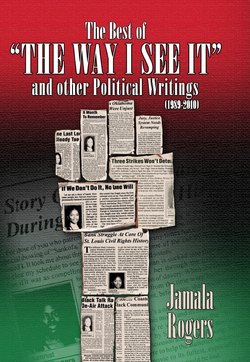Читать книгу The Best of "The Way I See It" and Other Political Writings (1989-2010) - Jamala Rogers - Страница 19
На сайте Литреса книга снята с продажи.
Black Like Coal
ОглавлениеApril, 2010
There have been a few books that detail the courageous but violent struggles of black coal miners in this country, like Black Coal Miners in America by Ronald L. Lewis and Coal, Class and Color: Blacks in Southern West Virginia by Joe William Trotter Jr. What I know about the life, culture and history of coal miners comes from my dear friend, Jane English. Her father started mining in West Virginia at the ripe age of nine years, along with his brother who was 11 years old. Jane was a union organizer at some point for the United Mine Workers of America (UMWA), which synthesized her personal knowledge of the mines with the history of the union. These history books chronicle the 250 years of blacks in the coal mining industry and their struggles with the mining bosses, scabs and sometimes even white union members. Before the union, coal companies used slaves and, like the cotton barons, were able to accelerate their profits on the backs of blacks and poor whites. Most times, white and black union brothers were in lock step against the vicious anti-union tactics of the companies. Some of these were actually armed confrontations, such as the strikes at the turn of the 20th century of 11,000 Alabama miners, 75 percent of whom were black. The strikes were led by black union leaders J. F. Sorsby, William Prentice and George H. Edmunds. The brothers carried out some bold tactics, including blowing up a Southern railcar carrying scab coal, before the effort was crushed by the National Guard.
The biggest armed confrontation in U.S. labor history is embedded in the coal mining wars of 1921. One hot summer August day, 8,000 armed black and white miners marched on Logan County and entered into a deadly exchange with the company-paid sheriff and his thugs. The miners were kicking butt until President Warren Harding sent in soldiers to quash the efforts that would have established a union in Logan Country.
From Jane, I learned one origin of the term, “redneck.” During the strikes, union miners distinguished themselves from the scabs by wearing red handkerchiefs around their necks. She told me that the United Mine Workers were known to pay the poll taxes of black workers so they could vote. UMWA was the first union to include opposition to racial discrimination in its founding documents. Women are the keepers of the stories about mining life and in mining towns, where coal is the only game in town; this is an important role for families who are multi-generational miners. Jane’s father gave 55 years of his life to the coal mines. “He started like most blacks did after slavery - you get yourself a pick, shovel and a wheelbarrow or a wagon, then you find a coal mine. After you filled up your wheelbarrow, you took it to the weigh master to get paid.”
The process was a step up from slavery where the slaves had to bring in four or five tons a day. If they made their quota, the slaves got to eat that day; if they didn’t, they got lashes across the back. The transaction closely resembled sharecropping because the company was always the winner. At the weigh station, the master would check each hunk of coal. If there was too much rock on the coal (and of course, the master determined what was too much), he would reject it by throwing it on the ground. I think you know what happened to the rejected coal that miners couldn’t reclaim.
Illiteracy of the miners worked in favor of the plantation and mining bosses, but even if you knew you were being exploited, there wasn’t much you could do about it. Unionizing mines were major victories for coal miners, especially black miners, who basically refused to work in non-union mines, given our history of hiring, firing and getting the worst jobs.
The overall numbers of miners dropped dramatically with the mechanization of mining and the use of oil. The recent mining incident in West Virginia was the deadliest in the last 25 years. It cannot be called an accident, given the horrendous working conditions reportedly known to Massey Coal but ignored. Of the 29 dead miners, it appeared that at least one was African American. It may be an indicator that the rich history of solidarity between black and white coal miners (“we’re all black underground”) may be a fading phenomenon. Most of us have come to believe that miners are white It’s a good thing we have the books to remind us of the relationships - and for women like Jane to keep the oral histories alive.
